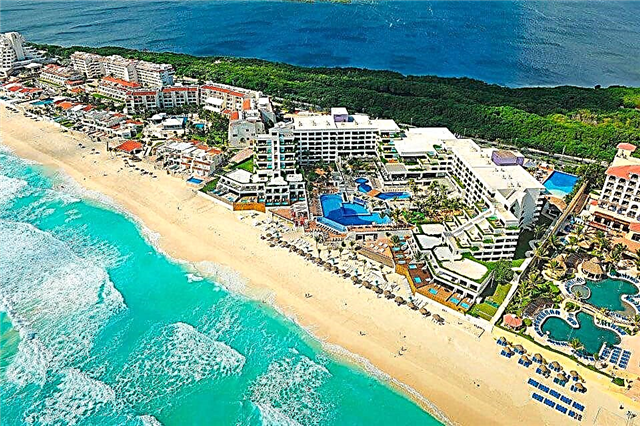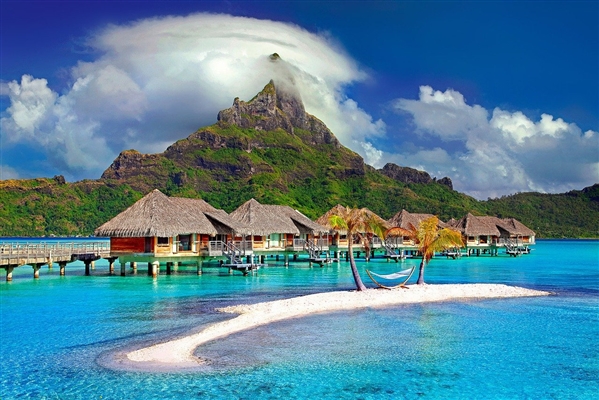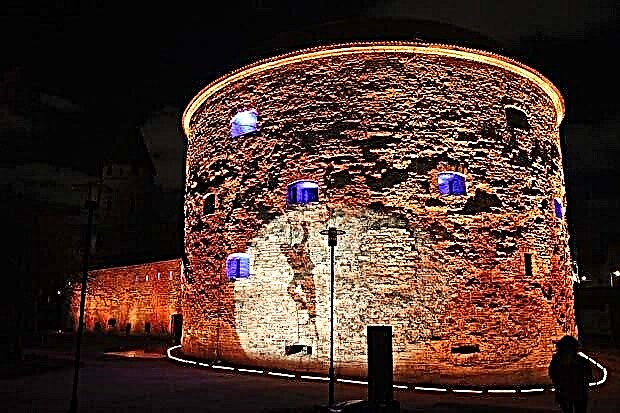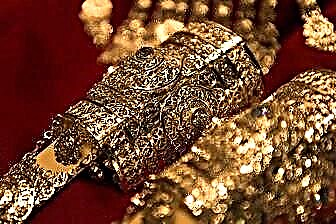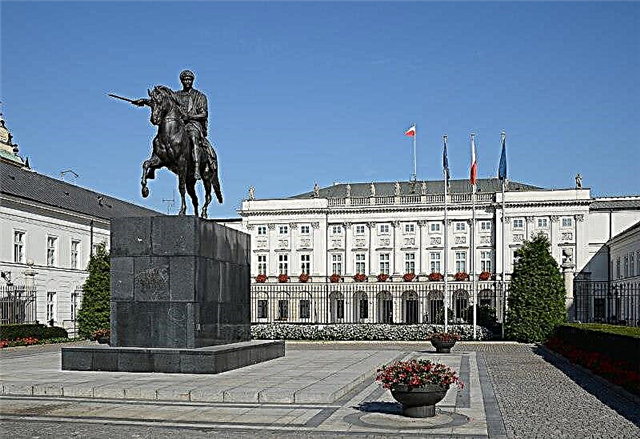Poland is beautiful mountains, virgin forests, majestic rivers and lakes, amazingly beautiful cities. Here, thousands of medieval monuments coexist with modern objects. This is confirmed by the unique Crooked House in Sopot, which has no analogues in the world.
The centuries-old history of Poland has left hundreds of monuments that are striking landmarks of the country, illustrating the path of its development and prosperity, decline and destruction, recovery from the chaos of wars and uprisings. Each ancient city is a kind of landmark, reflecting a particular era, system, historical events. A good example is the capital of Poland - beautiful Warsaw, where you can see a historical monument in every corner of the city.
Warsaw Castle Square

One of the main squares of the city in the Middle Ages was considered princely, because it was surrounded on three sides by palaces and castles of noble gentry, descendants of ancient aristocratic families. This place can be considered a Phoenix bird in architecture: there have been so many destruction and revival, created by human hands.
The square, located on the left bank of the Vistula, was connected to the right-bank district of the city by a bridge and an overpass, blown up by the Nazis in 1944. The city authorities made a decision - to transfer public transport to the tunnel, built under the Vistula, and to build a new one instead of the old blown up bridge.
The project, which changed the original appearance of the old square, was carried out in 1949. On July 22, the inauguration of the tunnel and the new bridge took place. The square has become a pedestrian area. Thanks to the joint efforts of historians and architects, all the houses built in the Baroque style were carefully restored; other buildings have been meticulously restored - evidence of a bygone era.
The Royal Castle

A striking example of the revival is the Royal Castle, the construction of which was started in the 16th century by King Sigismund III and continued until the 19th century by the following rulers who created a whole palace complex.
The fire of 1939 and the explosion of 1944 thoroughly destroyed the magnificent architectural structure, in which only the wing of the Royal Library remained intact. As a result of the greatest reconstruction, the castle acquired its former appearance, adorning the historical square.
Column of Sigismund

The central symbol of the square is the Corinthian column, which forms part of the Baroque monument in honor of King Sigismund III. The column is 8.5 meters high, topped by a 2.7-meter statue of a king in knightly armor, was installed in 1643. But this monument was also destroyed by the departing fascists in 1945, leaving the bronze sculpture of the king unharmed.
The column was restored anew in 1949, using red granite instead of the old red marble, erecting a statue of Sigismund on top. The monument was erected in a new place - a dais at the entrance to the Krakowskie Przedmiescie, from where it is clearly visible from all parts of the Old Town.
Presidential Palace in Warsaw

One of the largest and most majestic buildings in the capital, located on Krakowskie Przedmiescie Street, has a long and complex history of its existence. Its construction began in 1643 for the crowned hetman Stanislav Konetspolsky and was completed in 1648 by the hetman's son Alexander.
Over the centuries, many owners of the palace have changed, each of whom sought to change something, add to the building - the result was a monumental majestic building that served as the presidential residence from the 90s of the last century until the 2010 plane crash. Now the palace square is a place of memory of the victims, where on a sad date the inhabitants of Poland and tourists bring flowers and light candles.
A magnificent white building with many arched vaults, surrounded by a high openwork lattice, adorns the main city. The square in front of the building is extraordinarily beautiful and solemn: the majestic monument to Jozef Potocki, the mighty sculpture of a lion, slender cypresses, neatly trimmed live shrub hedges emphasize the splendor of the presidential palace.
Marienburg castle

Malbork Castle or Marienburg, as the Germans called it, is a symbolic embodiment of significant historical events and movements: Teutonic knights and crusaders, Polish princes and kings found shelter within its walls. The castle is truly unique as one of the largest medieval fortresses built of bricks in a typical Gothic style.
The unique complex was also badly destroyed during the Second World War and was completely restored, presenting now a vivid example of a medieval castle surrounded by a high brick wall, round watchtowers, palace buildings inside a huge courtyard occupying 20 hectares of land.
Taken under the protection of UNESCO, the castle today is a real tourist Mecca, where travelers from all over the world come.
Interesting articles:
- How to get to Warsaw
- Poland landmarks
- How to get to Poland
- Crooked House in Poland
- Czech Republic or Poland
Tatras - a natural landmark of Poland
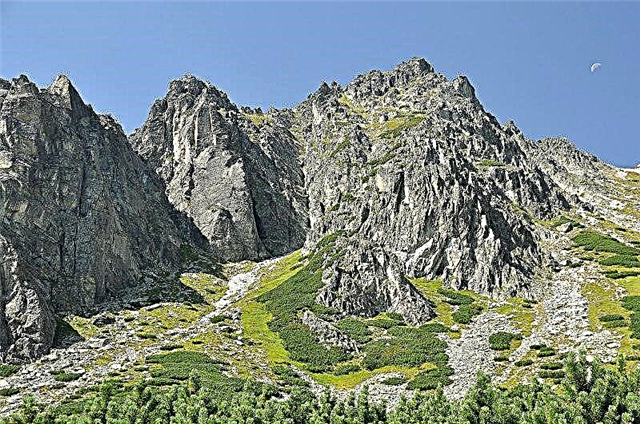
On the territory of Poland there are picturesque mountains that are a continuation of the Carpathians and are called the Tatras. The richest coniferous forests, glaciers, unique lakes, green valleys create an excellent natural infrastructure for the development of ski resorts and bases. The area of the High Tatras is more suitable for more extreme sports, because individual peaks reach 2000 m and more.
Zakopane resort

The center for practicing alpine skiing sports and recreation is the high-mountainous resort of Zakopane, which has wonderful ski and snowboard tracks, an abundance of interesting routes, excellent sanatoriums and recreation centers.
They strive to preserve and develop the Polish folk color, original Polish culture, national cuisine and traditions. The pristine beauty of mountain landscapes, combined with a high level of modern infrastructure, make the resort of Zakopane one of the best ski resorts in Europe.
In Poland there is something to see and where to have a good rest.
How to get to Poland? - in more detail in our article.


